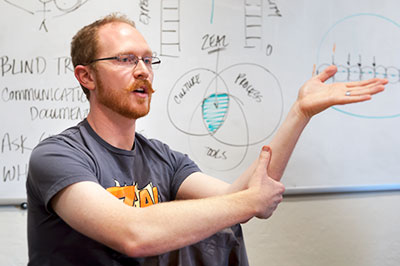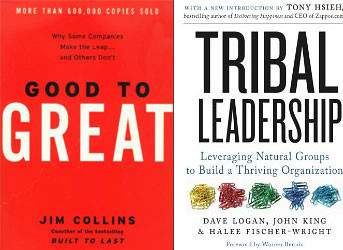What makes you happy at work? Benefits? Bonuses? Vacations?
Well none of these, actually. The top factors determining a person’s happiness at work are whether they a) enjoy the actual tasks required, b) are able to focus on the things they do best and c) are proud of their employer. Other factors that can impact happiness include relationships at work; the job’s social impact; feeling in control of your work and of workplace decisions; and sensing that you’re progressing and learning.
Statistics show your happiness at work is also a result of skill levels, providing service, supervising others and working at a small company, according to the Happiness at Work Survey jointly developed by Delivering Happiness at Work (DH@W) and Nic Marks.
DH@W is the consultancy firm Zappos CEO Tony Hsieh founded on the heels of his 2010 bestseller, Delivering Happiness.
Nic is one of the founding directors of Happiness Works as well as a fellow of the new economics foundation (nef) and a board member of Action for Happiness. He is best known for creating the award-winning Happy Planet Index—the first global measure of sustainable well-being. Nic spoke at the prestigious TEDGlobal conference in 2010 and authored one the first TEDbooks: A Happiness Manifesto.
More than 11,000 people in 90+ countries have taken the 47-question Happiness at Work Survey, which asks simple questions regarding work-life balance, use of time on the job and overall feelings while at work.
The results confirm that highly skilled workers are 50% more likely to be happy at work than their unskilled counterparts. People whose work involves caregiving or direct service are 75% happier than, for example, those in sales. Supervisors are 27% more likely to be happy than those who are supervised. And you are 25% more likely to be happy working for a company of fewer than 100 employees than for a business with 1,000 or more employees. Age matters, too. Workers age 40 and above tend to be happier than younger employees.
The 47-question survey takes about 10 minutes to complete. It asks questions such as, “How satisfied are you with the balance between the time you spend on your work and the time you spend on other aspects of your life?” and “How much of the time you spend at work do you feel bored?” The assessment also includes questions about colleagues and managers, workspace environment and your individual demeanor. After completion, survey respondents receive personalized reports intended to help navigate the way forward—particularly if, like many workers, they feel work is a test of endurance instead of a labor of love.
Some consider happiness in the workplace a fluffy subject. There’s an extensive body of research, however, demonstrating that a happy workforce can make a big difference. One large meta-analysis found happy employees have on average 31% higher productivity, their sales are 37% higher and their creativity is some three times higher than less-happy workers.
Recent research from the University of Warwick, UK, and IZA, Bonn, Germany, showed that randomly selected individuals who were made happier exhibited approximately 12% greater productivity, as measured by a standardized task of correctly adding combinations of numbers for 10 minutes. In one experiment, a comedy movie clip was played to a group of subjects. Their subsequent productivity was found to be substantially greater (approximately 13%) than the control group that had not viewed the clip (December 15, 2015, HBR The Daily Stat).
Take the happiness survey to find out how happy you are at work. We’ll be curious to hear the results!
Want to make a happy workplace? Call 541.601.0114 or email Chris Cook at Capiche. She will help you assess what’s happening now and make positive moves to increase happiness (and productivity) at work. Your work really can be a labor of love!








 When you have happy, fulfilled employees whose creativity is stretched and nourished, the company flourishes, too.
When you have happy, fulfilled employees whose creativity is stretched and nourished, the company flourishes, too.




 The realization that happy workers drive business success is sweeping the world, and the research keeps growing. Researchers at
The realization that happy workers drive business success is sweeping the world, and the research keeps growing. Researchers at 


